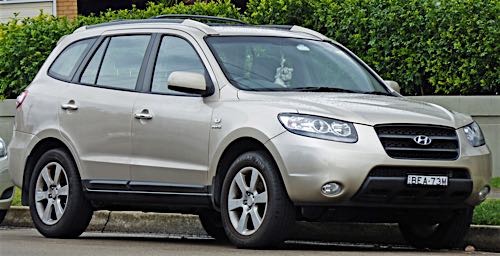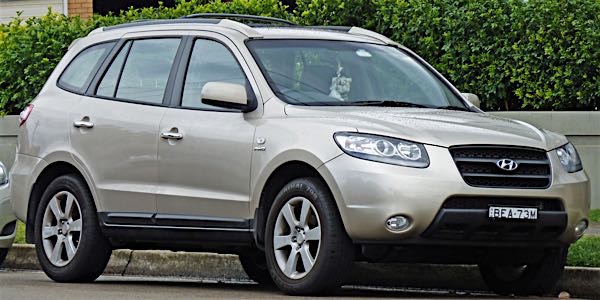
Follow this Real Fix to see how to diagnose a P2442 code on this 2007 Hyundai Santa Fe using a smoke machine to verify its EVAP system problem.
Model: 2007 Hyundai Santa Fe GLS 2.7L
Complaint: The customer states the check engine light is on.
Cause: Connected a scan tool and found code P2422 – EVAP Emission System – Vent Valve Stuck Close.
Service Procedure:
1. Connected a smoke machine to the evaporative emission (EVAP) system, induced smoke into the system and found smoke leaked from the EVAP vent valve, indicating an open vent valve.
2. Used the scan tool to command the EVAP vent solenoid closed and observed smoke stopped flowing from the EVAP vent valve, indicating a functional EVAP vent valve.
3. Used the smoke machine to perform an EVAP system pressure check and observed the system was able to hold pressure.
4. Used the scan tool to monitor live data and found the EVAP fuel tank pressure sensor signal parameter was above the specified range of 1.4 to 1.6 volts, indicating a vacuum in the fuel tank.
5. Removed the gas cap and observed the EVAP fuel tank pressure sensor signal parameter did not return to the specified range of 1.4 to 1.6 volts.
6. Visually inspected the fuel tank pressure sensor wiring harness and found no obvious signs of damage.
7. Used the scan tool to monitor the fuel tank pressure sensor parameter and wiggled the fuel tank pressure sensor wiring harness. Note: The fuel tank pressure sensor parameter did not change as the harness was wiggled, which indicated no circuit faults were present.

8. Backprobed the fuel tank pressure sensor signal circuit and monitored the sensor signal on a labscope.
9. Used a vacuum pump to apply positive pressure to the fuel tank pressure sensor and observed that its signal did not respond to changes in applied pressure. These test results verified the fuel tank pressure sensor was faulty.
Correction: Replaced the fuel tank pressure sensor, cleared codes, performed a road test and verified the vehicle operated properly. The check engine light did not illuminate and no fault codes returned.
Courtesy of Mitchell 1 SureTrack Real Fix.














